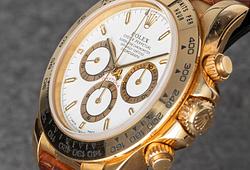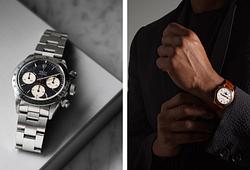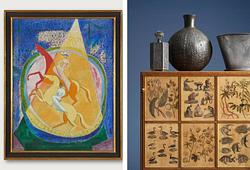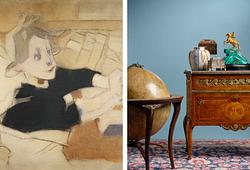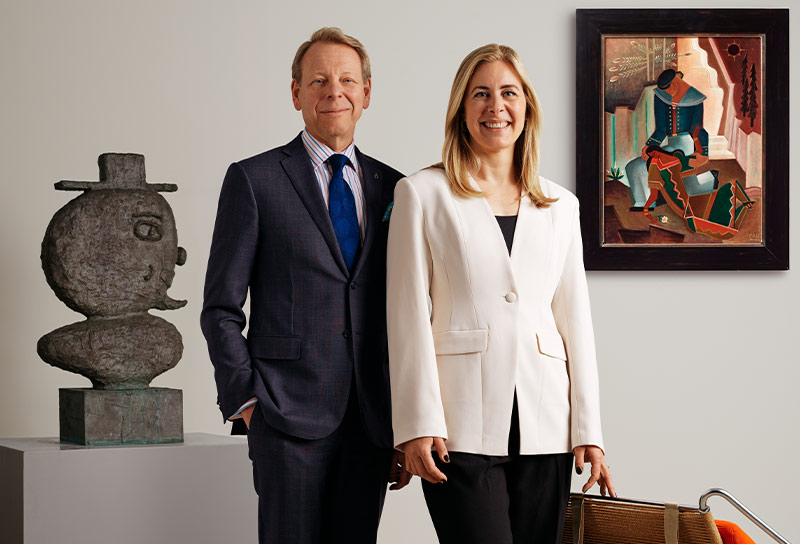Skål, porslin. Qingdynastin med Yongzhengs märke och period (1723-35).
Djup skåp skål med konisk form, dekor i pastel färger med fyra rundlar som avbildar de fyra årstidsblommorna, mellan dem lotusslingor. Insidan med en medaljong med fjärilar allt mellan dubble blå ringar vid kanterna. Undersidan med Yongzhengs märke inom dubbla cirklar. Diameter 22,3 cm.
En skadad skål, (paret) medföljer.
Kintsugi lagning.
Proveniens
Gustaf Oscar Wallenberg (1865-1937), Stockholm, and thence by descent
Gustaf O. Wallenberg was a Swedish businessman, diplomat and active politician. He was the son of André Oscar Wallenberg, founder of Stockholm Enskilda Bank (today's Skandinaviska Enskilda Banken, known as SEB). After a career in the Swedish Navy he turned to the business world and was active in improving the transoceanic shipping industry.
Wallenberg was Sweden's Envoy to Tokyo between 1907-1918. In April 1907 he travelled to Beijing to amend the Treaty of Canton (1847) between Sweden-Norway and China and to establish diplomatic relations between Sweden and the Qing Court. As the Swedish Envoy Extraordinary and Minister Plenipotentiary at the Court of Peking, he successfully negotiated and signed with Lien Fang, the Guangxu Emperor's High Commissioner Plenipotentiary and Senior Vice-President of the Wai Wu Pu, the Treaty of Amity, Commerce and Navigation, between Sweden and China, which was signed in Beijing on 2 July 1908, with an additional article signed on 24 May 1909.
Utställningar
Compare a pair at The Royal Collection Trust, RCIN 58951. Listed as possibly acquired by Queen Mary.
Other examples, sold at auction, include one sold at
Christies, 22–23 Mar 2018, Live auction 15449. Fine Chinese Ceramics and Works of Art, lot 757.
Christie's Hong Kong, 29 May 2013, lot 2113; one sold at Christie's Hong Kong, 1 June 2011, lot 4008; and the example previously in the Paul and Helen Bernat Collection, sold at Christie's Hong Kong, 29 April 2001, lot 552.
Litteratur
A number of similarly decorated doucai conical bowls of identical size and dated to the Yongzheng period, are in the collection of important museums and private collections. One example is illustrated in The Complete Collection of Treasures of the Palace Museum - 38 - Porcelain in Polychrome and Contrasting Colors, Hong Kong, 1999, p. 250, no. 229. Another example from the Chang Foundation is included in Selected Chinese Ceramics from Han to Qing Dynasties, Chang Foundation, Taipei, 1990, p. 320, no. 141. A further example in the Gulbenkian Museum of Oriental Art and Archaeology, University of Durham, is illustrated by I. L. Legeza in A Descriptive and Illustrated Catalogue of the Malcolm MacDonald Collection of Chinese Ceramics, London, 1972, pl. CXXXIX, no. 378. Another example was included in the exhibition Chinese porcelain from the 15th to the 18th century, Eskenazi Ltd., London, 2006, no.12.
Övrig information
Some of the Walleberg pieces are repaired in Japan in a technique called Kintsugi (translates to ‘golden joinery’), also known as kintsukuroi ‘golden repair’. It is a Japanese art of repairing broken pottery by mending areas of breakage with lacquer dusted or mixed with powdered gold, silver or platinum, and it treats breakage and repair as a part of the history of an object rather than something to disguise.
One can clearly see in the academic collection of Gustaf Wallenberg, that he appreciated the items for their quality and the rareness of the pieces, and that he very confident and appreciated this way of taking care of the magnificent cultural heritage of China.





